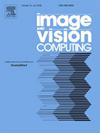RGB-T语义切分的跨模态协同校正网络
IF 4.2
3区 计算机科学
Q2 COMPUTER SCIENCE, ARTIFICIAL INTELLIGENCE
引用次数: 0
摘要
利用RGB-Thermal (RGB-T)数据,多模态语义分割可以在不同的环境条件下对图像进行逐像素分类,包括光照和遮挡的变化。然而,在有效利用其互补优势的同时减少各种模式之间的差异仍然是一项重大挑战。针对这一问题,提出了一种新的RGB-T语义切分的跨模态协同纠错网络(3CNet)。3CNet的核心在于“先修正后融合”的策略。跨模态协同校正模块采用正交和空间关注机制对特征表示进行校正,保证了特征的一致性和可靠性,便于后续融合。此外,引入了独特的三流特征融合结构,提高了多模态特征的利用效率,提高了融合的整体性能。我们提出的网络在两个RGB-T数据集上展示了最先进的性能,突出了多模态信息在提高分割精度方面的潜力,并证实了其在实际应用中的有效性。代码和结果可在https://github.com/GraceGuoo/3CNet上获得。本文章由计算机程序翻译,如有差异,请以英文原文为准。
3CNet: Cross-modal cooperative correction network for RGB-T semantic segmentation
Utilizing RGB-Thermal (RGB-T) data, multi-modal semantic segmentation enables pixel-wise classification of images across diverse environmental conditions, including variations in lighting and occlusions. However, a significant challenge persists in reducing the discrepancies between modalities while effectively utilizing their complementary strengths. To address this issue, a novel Cross-modal Cooperative Correction Network (3CNet) is proposed for RGB-T semantic segmentation. The core of 3CNet lies in the “correction-then-fusion” strategy. The cross-modal cooperative correction module employs orthogonal and spatial attention mechanisms to rectify the feature representations, thereby ensuring consistency and reliability of features for subsequent fusion. Additionally, a unique triple-stream feature fusion structure is introduced to enhance the efficiency of multi-modal feature utilization and improve overall fusion performance. Our proposed network demonstrates state-of-the-art performance on two RGB-T datasets, highlighting the potential of multi-modal information in advancing segmentation accuracy and confirming its efficacy in practical applications. The code and results are available at https://github.com/GraceGuoo/3CNet.
求助全文
通过发布文献求助,成功后即可免费获取论文全文。
去求助
来源期刊

Image and Vision Computing
工程技术-工程:电子与电气
CiteScore
8.50
自引率
8.50%
发文量
143
审稿时长
7.8 months
期刊介绍:
Image and Vision Computing has as a primary aim the provision of an effective medium of interchange for the results of high quality theoretical and applied research fundamental to all aspects of image interpretation and computer vision. The journal publishes work that proposes new image interpretation and computer vision methodology or addresses the application of such methods to real world scenes. It seeks to strengthen a deeper understanding in the discipline by encouraging the quantitative comparison and performance evaluation of the proposed methodology. The coverage includes: image interpretation, scene modelling, object recognition and tracking, shape analysis, monitoring and surveillance, active vision and robotic systems, SLAM, biologically-inspired computer vision, motion analysis, stereo vision, document image understanding, character and handwritten text recognition, face and gesture recognition, biometrics, vision-based human-computer interaction, human activity and behavior understanding, data fusion from multiple sensor inputs, image databases.
 求助内容:
求助内容: 应助结果提醒方式:
应助结果提醒方式:


